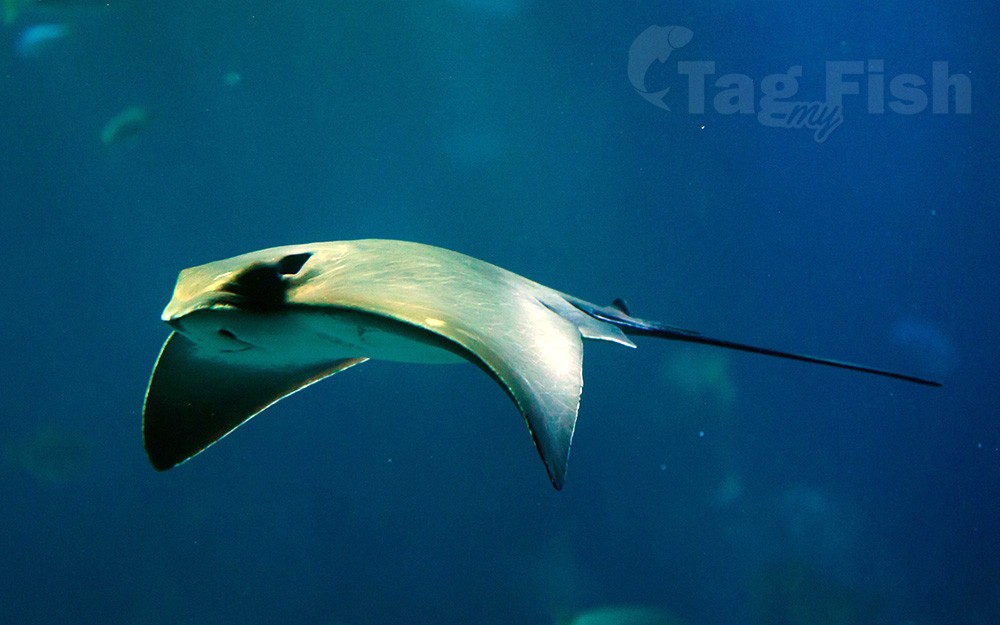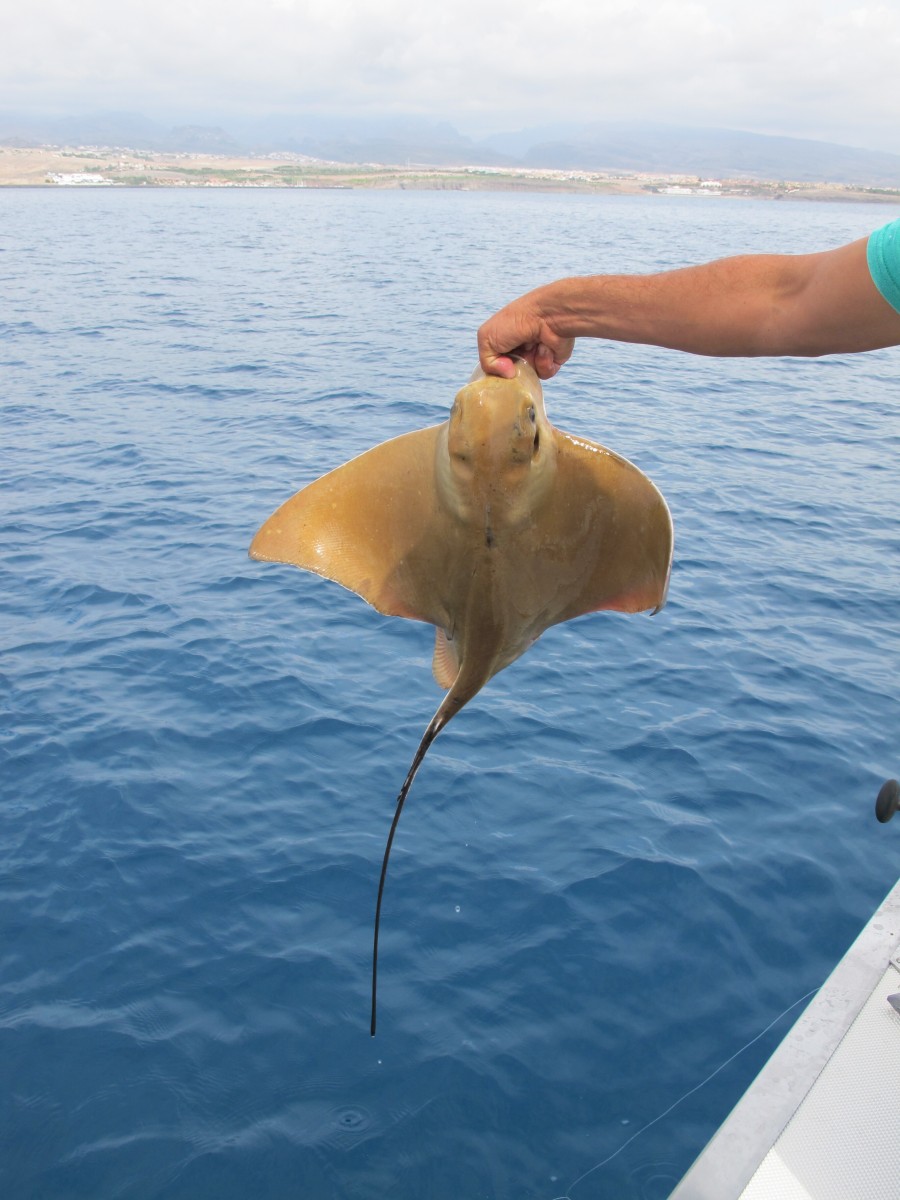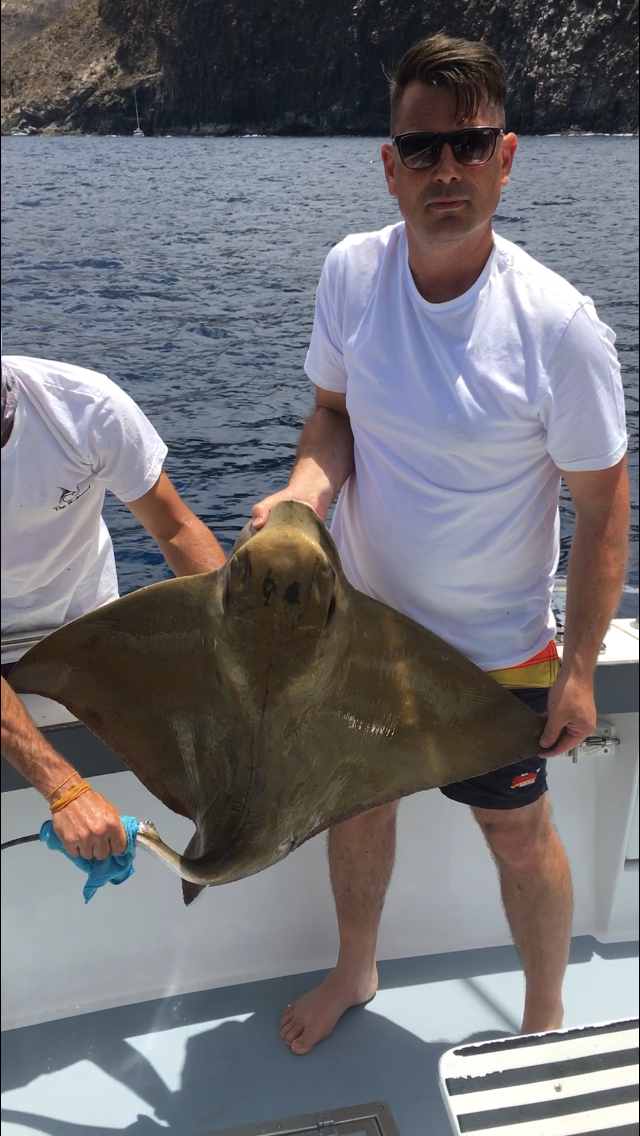Common eagle ray
(Myliobatis aquila)

Classification
General data
The common eagle ray or bullray (Myliobatis aquila) is a species of fish in the family Myliobatidae.
It inhabits the eastern Atlantic Ocean (North Sea to South Africa), the Mediterranean Sea and the south-western Indian Ocean.
The common eagle ray reaches up to 183 cm (6.0 ft) in total length and has a disc width up to 80 cm (2.6 ft). Most specimens are, however, smaller. Females grow to be larger than males.
The dorsal surface is brown or black while the ventral surface is white. It has a rhomboidal disc with a pair of large, triangular pectoral fins projecting on either side, and a single dorsal fin. The blunt snout is rounded and the tail is long and slender, with a large spine at its base but no tail fin. On average, males have 72 spine serrations and females have 66 spine serrations. The spine makes about 70% of the male’s length and 65% of the female’s length.
The mid dorsal groove, which contains the glandular tissue necessary for venom injection, extends along 10-40% the tail. It has one or two excretory channels for the venom.
It occurs both close to the shore and further out, at depths down to about 800 m (2,600 ft), but much of its time is spent in shallower water at less than 50 m (160 ft). It typically prefers more open sandy areas. It has also been found in a semi-enclosed lagoon on Gran Canaria Island, particularly in winter (March to April) and summer (August to October), where it was founded to prefer rocky and mixed bottoms.













